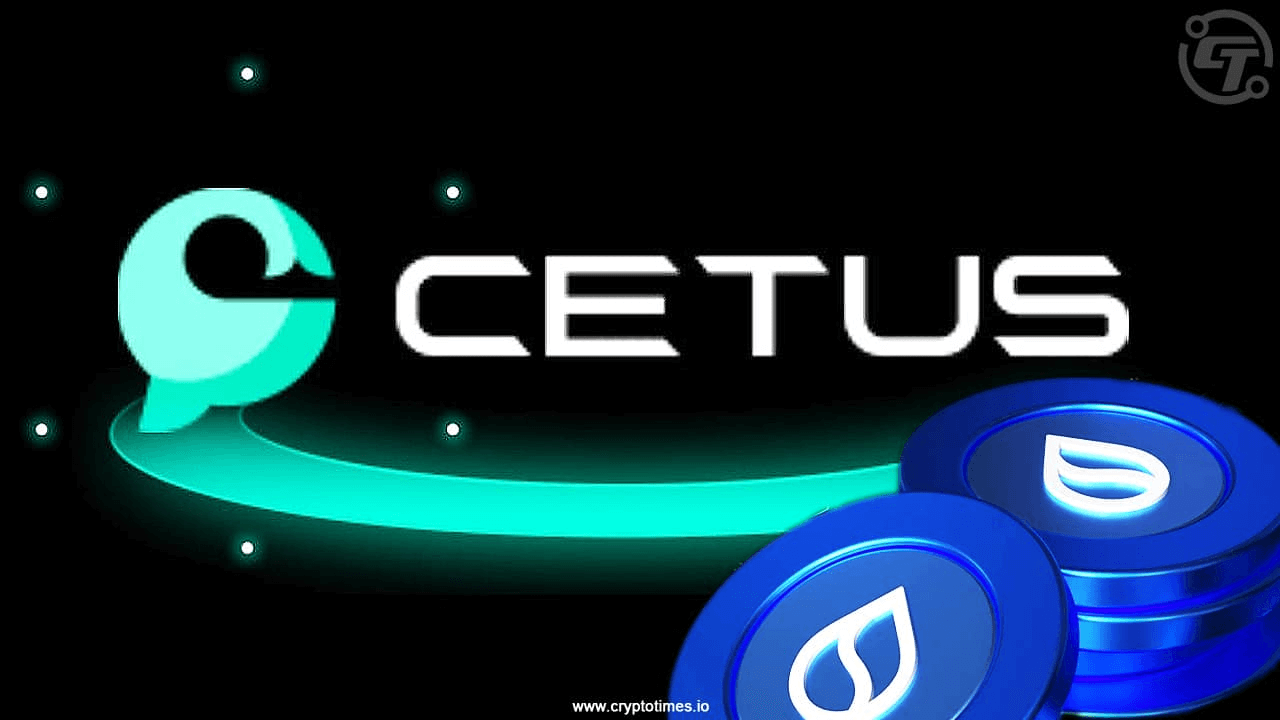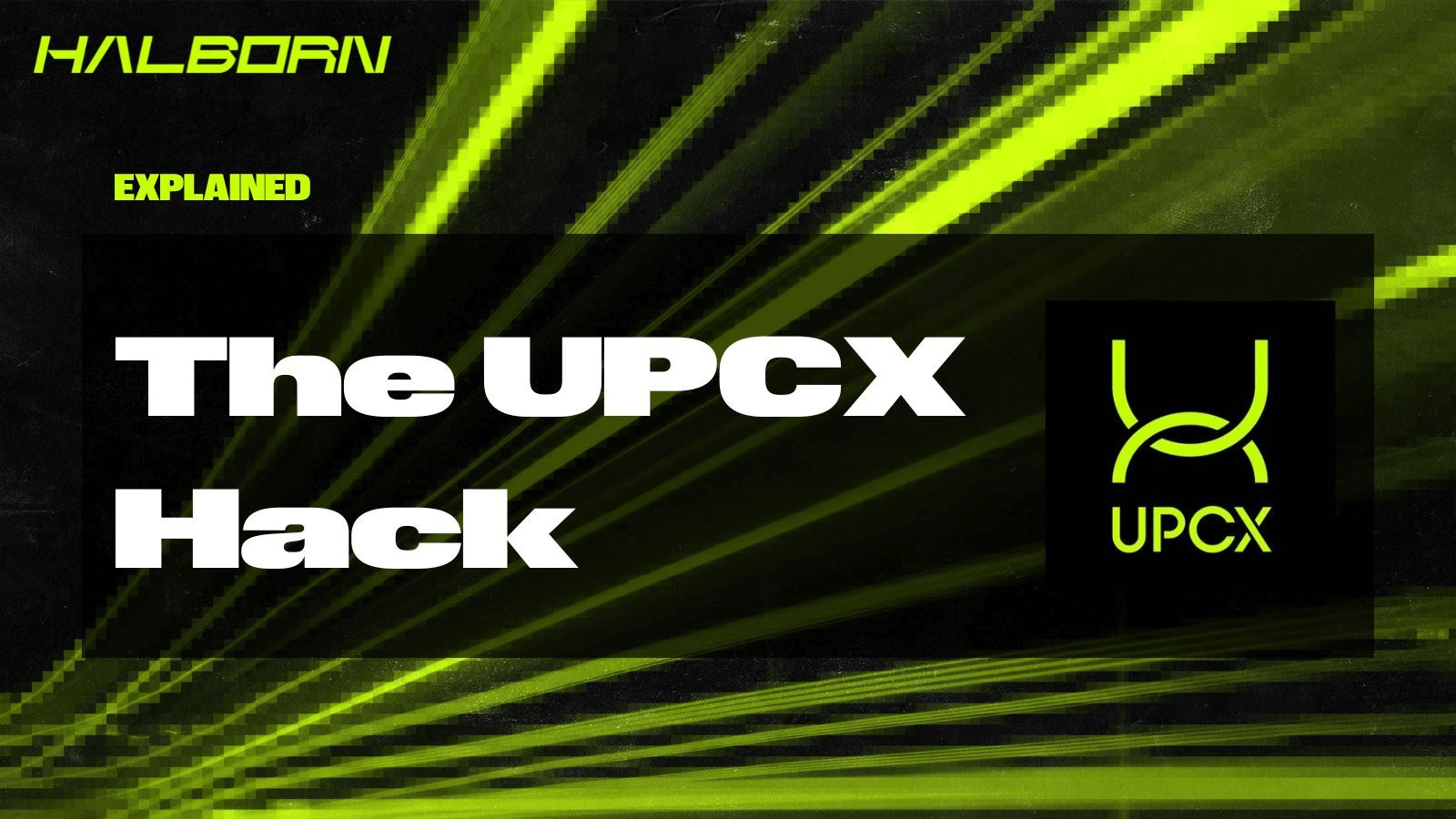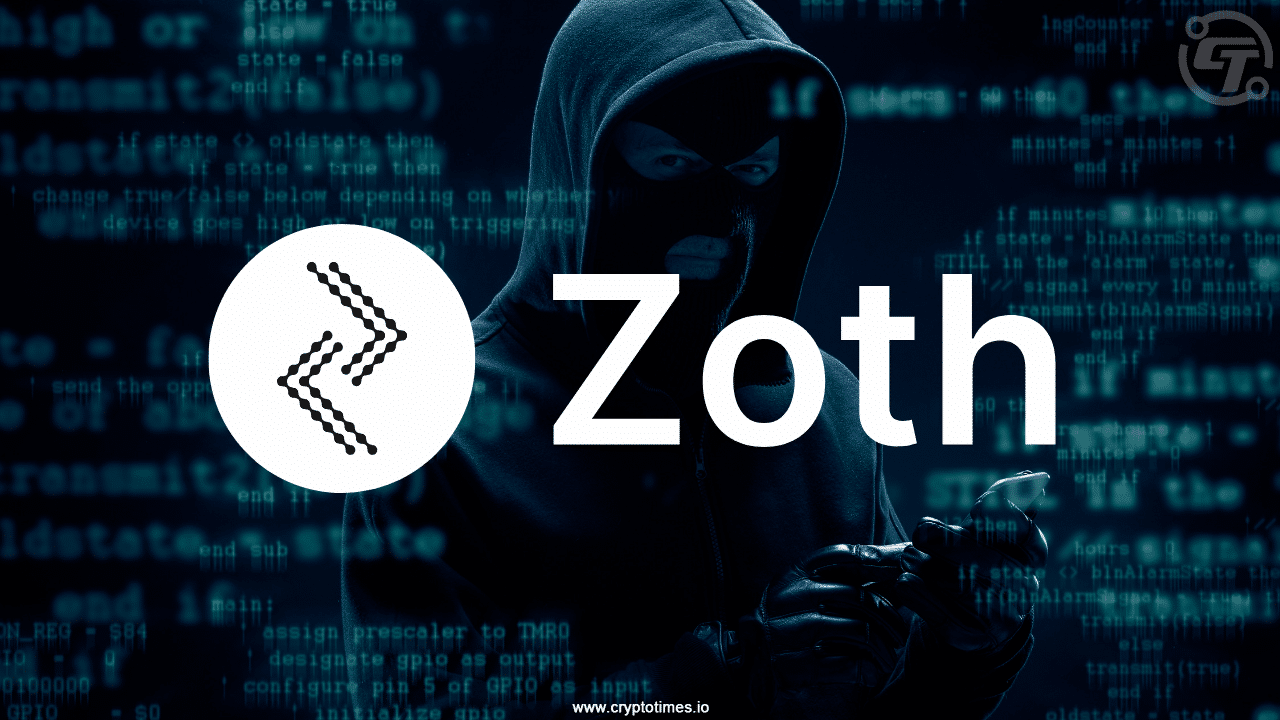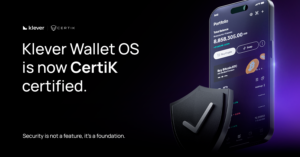
You’re in DeFi to take control. No banks, no waiting, no middlemen—just you and the blockchain.
But here’s the truth no one likes to admit: Even code can lie.
Not on purpose, but through tiny flaws—lines of smart contract code that attackers love to twist and turn into million-dollar paydays.
And they don’t need to trick you.
They just need one mistake in the contract you’re staking with, swapping through, or providing liquidity to.
In 2025 alone, smart contract exploits resulted in $2.3B lost across several platforms from users who thought they were playing it safe, according to ccn report.
So let’s cut the noise. In this guide, you’ll learn:
- What these exploits are (no fluff, just facts)
- The biggest smart contract hacks you should actually care about
- How to spot a risky dApp before you click “Confirm”
- What to do if it already happened to you
- And the no-BS tactics to stay safer next time
Because in DeFi, ignorance isn’t bliss. It’s just expensive.
Let’s Back Up: What Is a Smart Contract?
A smart contract is not a document. It’s not a PDF. It’s not something you sign. It’s code.
But not just any code—it’s code that lives on the blockchain. It runs automatically. It holds money. It makes decisions. And once deployed, no one can change it.
Think of it like this:
You’re not giving your crypto to a person or a company.
You’re locking it into a line of code that says, “If X happens, then Y must happen.”
No middlemen. No bank. No customer support. Just logic. And that’s the beauty—and the danger.
What Is DeFi (Decentralized Finance)?
DeFi is the use of smart contracts to build financial tools that work without institutions.
Want to swap tokens? Lend your assets? Earn passive income?
You can do all of that through DeFi platforms—no signup, no approval, just a connection between your wallet and a smart contract.
This gives you full control. But it also puts all the risk on you.
How Do You “Connect a Wallet” to Use DeFi?
You don’t log in. You don’t create a username.
In DeFi, you connect your crypto wallet—usually in just a few clicks.
Here’s what that looks like:
- Choose a DeFi app (like a DEX, yield platform, or NFT marketplace).
- Click “Connect Wallet.”
- Select your wallet (like Klever Wallet, MetaMask, Trust Wallet).
- Your wallet asks you to approve the connection.
- Now you’re connected. The site can read your balance, request approvals, and interact with your wallet address.
At this point, you’re not just browsing.
You’re linked to the contract—and anything you approve next can affect your actual funds.
What Are Smart Contract Exploits (And How They Works in Practice)
A smart contract is basically code that runs on the blockchain. Once it’s live, no one can change it—not the developers, not the users, not even the project founders. It runs exactly as written.
Sounds like a dream, right?
Until someone finds a mistake.
Smart contract exploits is when a hacker finds a flaw in that code, and uses it to drain funds, mint tokens, or take control of something they shouldn’t. No phishing, no fake websites. Just a smart person exploiting dumb logic.
Real-world example:
Let’s say there’s a staking contract. You deposit tokens and earn rewards. But what if the contract forgets to lock withdrawals before it finishes updating the balance?
A hacker could:
- Stake.
- Trigger the reward.
- Withdraw.
- Trigger it again.
- Repeat in a loop.
Result: Millions gone.
And you? Watching your dashboard drop to zero without warning.
Why Smart Contract Exploits Matters To You
You don’t need to write code to get wrecked by it.
- You connect your wallet to a DeFi app.
- You click approve.
- You stake, farm, or swap.
- The smart contract fails behind the scenes.
- You lose your funds, even if the app looks clean and official.
This isn’t about bad luck. It’s about being prepared.
The Biggest Smart Contract Exploits of 2025 (And What They Teach Us)
Smart Contract exploits aren’t theoretical. They’re happening right now—on popular platforms, backed by big names, and affecting real users. If you’re using DeFi, these are not someone else’s problems. They’re warnings.
1. Cetus (Sui) – May 2025

Loss: $223 million
Exploit Type: Liquidity pool arithmetic bug
What happened:
Attackers exploited a math flaw and fake tokens to manipulate pool balances and drain funds.
Status: $162 million frozen; rest unrecovered.
Lesson: One overlooked math error nearly collapsed a major DeFi app. Precision in smart contract logic is non-negotiable.
2. zkSync – April 2025

Loss: $5 million
Exploit Type: Admin key compromise
What happened:
A leaked admin key allowed an attacker to trigger the sweepUnclaimed() function in zkSync’s airdrop contract, minting 111 million ZK tokens. Core protocol and user funds were not affected.
Resolution:
zkSync offered a bounty; the attacker returned 90% of the funds.
Lesson:
Even secure contracts are exposed if admin keys aren’t protected. Use multisig or MPC for critical permissions.
3. UPCX – April 2025

Loss: $70 million
Exploit Type: Unauthorized smart contract upgrade
Details: Attackers gained control over a privileged address, pushed a contract upgrade, and drained locked funds.
Status: Funds unrecovered.
Lesson: Smart contract upgradeability must be secured via multisigs or timelocks.
4. Zoth – March 2025

Loss: $8.4 million
Exploit Type: Manipulated minting function
Details: Hackers found a mint function accessible without proper checks, allowing them to create tokens and dump them.
Lesson: Mint and burn functions must be access-restricted and well-tested.
5. Wemix – March 17, 2025

Loss: $6.1 million
Exploit Type: Stolen authentication keys
What happened:
Attackers accessed private keys from a shared repository, enabling unauthorized withdrawals from WEMIX’s Play Bridge Vault. Over two months, they executed 13 successful transactions, stealing 8.65 million tokens.
Status: Funds largely laundered through exchanges; investigation ongoing.
Lesson: Secure key management is critical. Even robust smart contracts are vulnerable if off-chain credentials are compromised.
6. Moby – January 10, 2025

Loss: $2.5 million
Exploit Type: Price oracle manipulation
Details: A flash loan attack enabled an attacker to manipulate the asset valuation used in lending pools.
Lesson: Relying solely on single oracles in lending contracts opens the door to classic DeFi exploits.
Each one of these smart contract hacks happened fast. Most victims never saw it coming. And in nearly every case, the contract did what it was programmed to do—it just wasn’t programmed well.
Next, we’ll show you how to spot red flags before it’s too late.
How to Spot a Risky Smart Contract Before You Use It
In DeFi, you don’t need to be a developer to stay safe. But you do need to pay attention.
Smart contracts don’t ask questions. They don’t warn you before draining your wallet. They do exactly what they’re programmed to do, even if that means executing a scam perfectly.
So before you click “Approve” or “Stake,” here’s what to look for.
1. No Audit? Walk Away.
Legit protocols publish smart contract audits: independent reviews that look for bugs and backdoors.
No audit means:
- No one checked the code for errors.
- Or worse: they checked and didn’t want to share the results.
What to do:
Look for links to audit reports from trusted firms like Certik, Hacken, or OpenZeppelin. If there’s no mention of an audit on the site, that’s your red flag.
2. Too Good to Be True? It Probably Is.
If a new platform promises 10,000% APY, instant withdrawals, and zero fees… it’s bait.
Excessive rewards are how scammers lure liquidity into flawed or malicious contracts.
What to do:
Compare returns with established DeFi protocols. If it looks outrageously high with no explanation, stay out.
3. Unknown Team or Zero Transparency
Anonymous founders aren’t always a dealbreaker in crypto—but no track record, no documentation, and no social presence should put you on alert.
What to do:
Check their GitHub, Twitter, or Discord. Are they active? Are people asking questions or complaining? Silence is a sign something’s off.
4. Fake or Forked Code
Scammers often clone popular protocols like Uniswap or Aave, tweak the contracts, and launch under a new name. What they change is the part you don’t see, like who controls the funds.
What to do:
Check if the platform is open-source. Use tools like DeFiLlama or RugDoc to verify reputation. If the code is closed and the project is brand new, assume risk is high.
5. Sketchy Wallet Approvals
When you connect your wallet and approve a token, you might be giving the contract permission to spend unlimited tokens on your behalf.
This is where many users get drained.
What to do:
- Always read what you’re approving.
- Use tools like Revoke.cash to check and remove old permissions.
- Be especially careful with tokens that aren’t widely used or recognized.
6. Missing or Suspicious Contract Info
If the dApp doesn’t link to the contract address or the contract looks brand new and isn’t verified, something’s off.
What to do:
Look it up on block explorers (like Etherscan, KleverScan or Sui Explorer). Is the contract verified? Are people interacting with it? Is it owned by a multisig or one wallet?
Smart contracts are neutral. They don’t care if you understand what you’re signing. That’s why you need to slow down, double-check, and only trust platforms that earn it.
What to Do If You’ve Already Been Affected by a Smart Contract Exploit or Scam
You clicked approve. You staked your tokens. You thought everything was working—until it wasn’t.
Your funds are gone, and the screen shows zero. No error message. No rollback. Just silence.
Take a breath. Then take action.
1. Stop and Revoke Permissions Immediately
If the contract still has permission to move your tokens, it could drain more.
What to do now:
- Go to Revoke.cash or your wallet’s permissions dashboard.
- Connect your wallet.
- Revoke any active approvals, especially for the token involved.
This doesn’t bring back what’s lost—but it stops future damage.
2. Don’t Fall for the Second Scam
Scammers often follow up with “recovery services” on Discord, Telegram, or Twitter. They’ll say they can restore your funds—for a fee.
They’re lying. It’s part two of the same scam.
Golden Rule:
Never send more crypto to someone claiming they can reverse a hack. They can’t. No one can.
3. Report the Incident
Even if it’s DeFi, you can still report fraud. You may not get your money back, but your case adds to ongoing investigations.
Where to report a smart contract exploit:
- Chainabuse (chainabuse.com)
- Your local cybercrime division
- Twitter tags like #CryptoScam and @ScamSniffer for visibility
- Community alerts (Reddit, Discords, project forums)
Some DeFi protocols issue warnings or freeze contracts when enough users report suspicious activity. It’s worth doing.
4. Track the Funds On-Chain
You can follow the stolen assets using a block explorer:
- Etherscan (Ethereum)
- BscScan (BNB Chain)
- Solscan (Solana)
- Sui Explorer
- KleverScan
You’ll see where the funds go: to a mixer, a bridge, or a CEX. This info helps public investigators and communities track the flow.
5. Check for Protocol Response or Compensation
In some cases, DeFi protocols:
- Recover partial funds
- Launch grants or reimbursements
- Offer NFT-based claims
- Freeze stolen assets if caught early
This won’t happen in most cases—but it has happened before (e.g., Curve Finance, Euler Finance). Don’t assume it’s hopeless. Stay informed through the protocol’s official channels.
6. Learn. Document. Move Smarter.
Every scam hurts. But it also teaches. If you were affected:
- Document what happened and how
- Learn what to avoid next time
- Help others by sharing your story
Scams thrive in silence. The more we talk, the harder it is for them to win.
How to Stay Safe in DeFi Without Becoming Paranoid
You don’t need to be a coder. You don’t need to live in fear.
But in DeFi, you do need a system—because every transaction is final, and every smart contract interaction is a risk you accept.
The good news? You can stay safe without killing your momentum.
Here’s how.
1. Stick to Protocols With a Track Record
New isn’t always bad—but unproven contracts, unaudited code, and anonymous teams are a triple threat.
Use platforms that:
- Have been live for months (not hours)
- Show real user volume and locked value (check DeFiLlama)
- Publish smart contract addresses and audit reports
If it’s brand new and full of hype, let others test it first.
2. Always Know What You’re Approving
Most exploits happen because users approve something they don’t understand—like unlimited token access.
What to do:
- Read the approval prompt before clicking.
- Use wallet extensions that display full contract data (like Klever Wallet Extension or Rabby).
- Revoke old approvals regularly
3. Don’t Trust Screenshots, Threads, or Hype
If someone sends you a deal on Telegram or Twitter:
- It’s probably fake.
- If it promises insane returns, it’s definitely fake.
Golden Rule #2:
If it’s not from the official website, it doesn’t exist.
4. Use a Wallet Just for DeFi Interactions
Keep your main funds in cold storage or a separate wallet. Use a dedicated wallet with limited funds for dApps and testing.
That way, even if one contract goes bad, your entire portfolio isn’t exposed.
5. Watch On-Chain Activity Before You Jump In
You don’t need to be technical to do this:
- Look up the contract on a block explorer.
- Are other users interacting with it?
- Are funds moving normally?
- Is the contract verified?
Suspicious silence or wallet clustering are signs to back off.
6. Follow Security Alerts
Stay in the loop by following on socials:
- @SlowMist_Team
- @CertiK
- @ScamSniffer
- Your wallet provider (e.g. @Klever_io)
They publish real-time alerts on exploits and risky tokens.
DeFi Security Starts With You
DeFi is power without permission. That’s the upside. But power without protection? That’s where the danger lives.
Use your tools. Slow down before approving. Learn from every mistake—yours or someone else’s.
You don’t need to be a developer to stay safe. You just need to be sharper than the scam.
Stay vigilant. Be Klever


